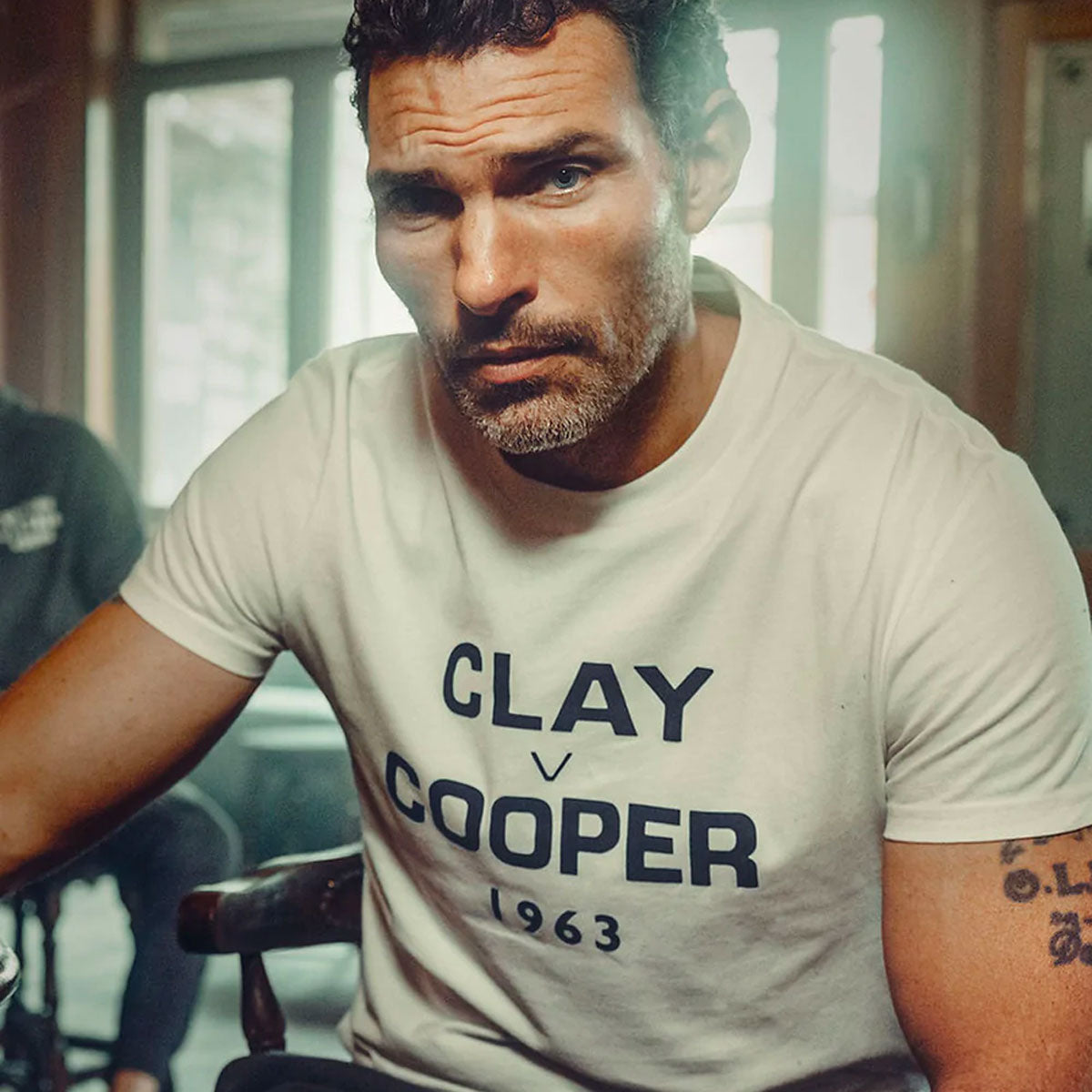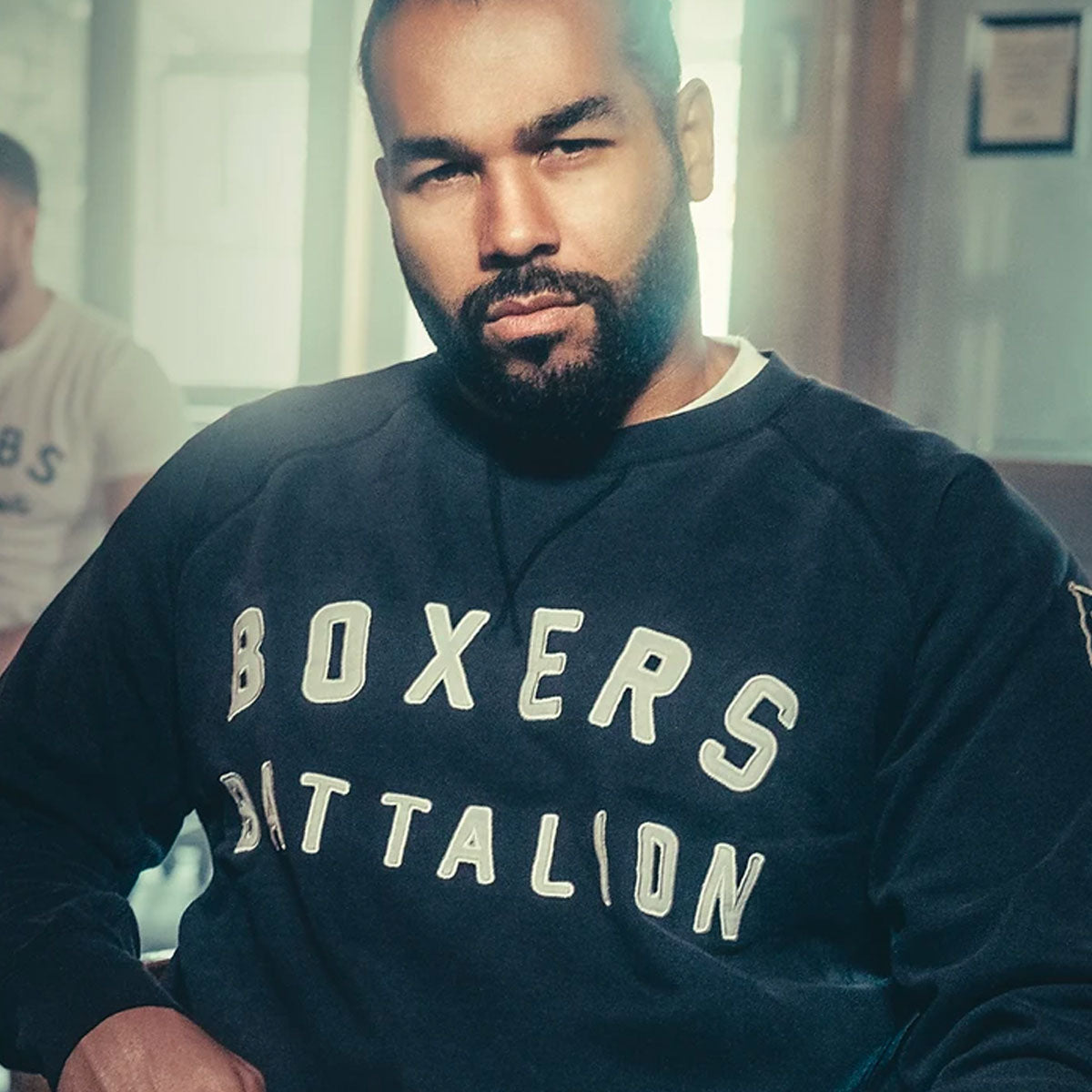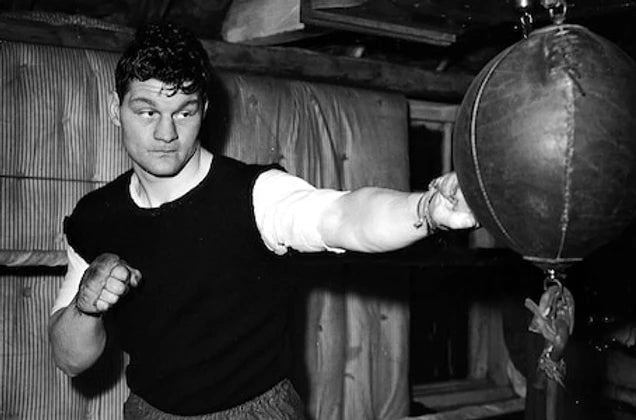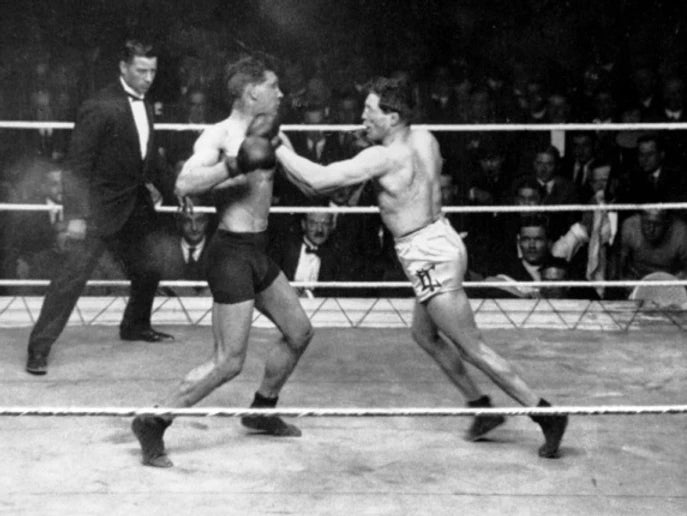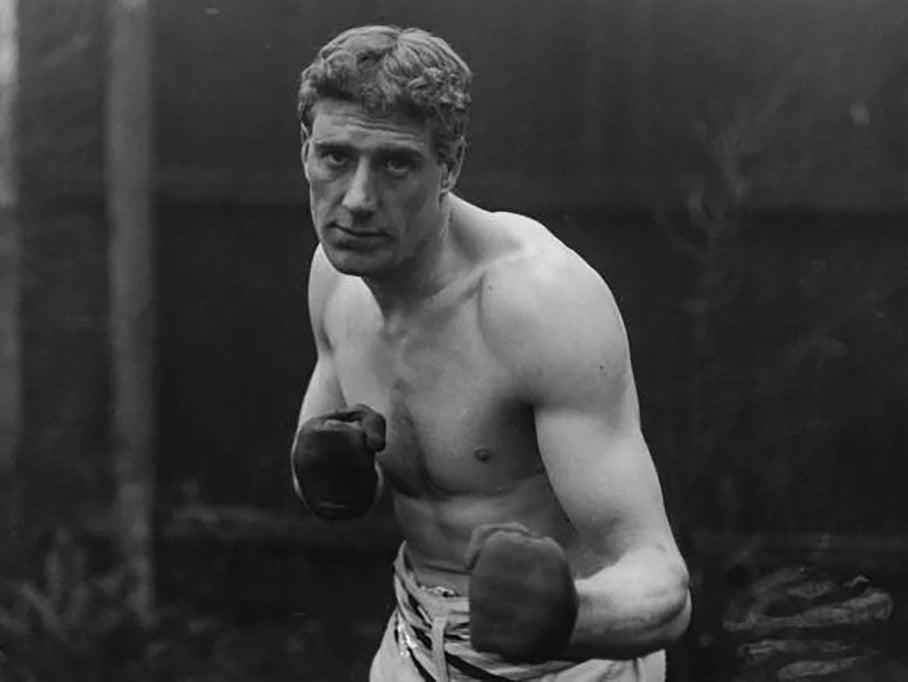Contributed by guest sportswriter Paul Zanon
While Hitler was preparing to unleash hell on Europe, a certain Doncaster destroyer by the name of Bruce Woodcock was preparing to unload his own arsenal onto the boxing scene.
Training alongside his brother Malcolm, under the strict tutelage of their father Sam, a former British Army lightweight champion, Woodcock captured the light heavyweight ABA title on 29 March 1939 at the Albert Hall a matter of months before the start of the Second World War.
The proud Yorkshireman was born in Doncaster on 18 January 1921 and first donned the gloves at the age of six. By 12 he was a schoolboy champion. A few weeks after his ABA success, Woodcock represented England at the European Amateur Boxing Championships in Dublin, but was unsuccessful in his bid to add to his silverware collection.
A little over four months later, one and a half million men had been conscripted into the British armed forces, with that figure doubling by 1945. Over 300,000 soldiers would eventually lose their lives in battle. Woodcock was one of the few not be called up and while Britain was looking up to the skies at the humming of the Luftwaffe, awaiting the second coming of the Blitz, Woodcock was looking straight at his opponent with his hands up, chin down, as he made his professional debut on 26 January 1942, at the Royal Albert Hall, against Stocker Fred Clark.
After stopping Clark in three rounds, Woodcock crushed his next five opponents, before picking up the Northern Area light heavyweight title on 25 September of the same year, beating ring veteran, Jack Robinson. However, 14 fights later, with a destructive trail of knockouts behind him, Woodcock took on Jack London (father of future heavyweight Brian), for the British and Commonwealth heavyweight straps.
For the two years leading up to the fight, Woodcock trained in a home-made gym within a dusty old stable in the back of ‘The Plough’ pub in Doncaster. Rumour has it that the infamous highwayman, Dick Turpin, used that very same space to stay low during the 1730s, and in true Turpin style, Woodcock turned up to the London bout all guns blazing.
Weighing in at a mere 182lbs (13 stone even), Woodcock gave away a massive 32lbs advantage to his opponent from County Durham. However, as Mark Twain once said, ‘It’s not the size of the dog in the fight, but the size of the fight in the dog’, and Woodcock knocked out London in six rounds at Tottenham FC’s stadium in White Hart Lane. After this victory, Woodcock was ranked No.3 in the world by The Ring magazine, behind Tami Mauriello and Jimmy Bivins. 
Five weeks after a scintillating win, on 24 August 1945, nine days before the end of the War, Woodcock made his maiden voyage outside of the UK, stopping Martin Thornton, AKA ‘The Connemara Crusher’, in Dublin. The fight was remembered for reasons other than boxing. According to Boxing News, Thornton, who had already been stopped by Woodcock two years prior, refused to fight unless Jack Solomons, the promoter, paid him his purse in advance. The moment Solomons did, Thornton bet the majority of it on Woodcock to win.
By May 1946, Woodcock had racked up a very impressive record of 25-0, with 24 knockouts. Many attributed the Yorkshire favourite’s strength to working full time in a railway workshop. Either way, he’d earned himself the chance to fight at the Mecca of boxing, Madison Square Garden, on 17 May 1946. His opponent, Tami Mauriello also had a long list of knockouts to his name going into the fight, beating both Henry Cooper and Lee Savold twice. It was never going to be an easy fight.
Woodcock arrived a few weeks in advance of the showdown, training in Bear Mountain. There’s footage of him running in what would certainly pass as a good outfit for a Saturday night out. Shirt, top button fastened, sleeves rolled up, tank top jumper, flannel trousers and black shoes. Possibly the smartest dressed fighter to put in roadwork?
The contest acted as an informal world title eliminator, with the victor going on to fight the legendary Joe Louis. Unfortunately, for Woodcock, Mauriello caught him with a bone crunching uppercut in the fifth round, which rendered him unfit to make the 10 count. 
Bouncing back a little over two weeks later, Woodcock took on the Dorset born loveable rogue, Freddie Mills at the Harringay Arena. Despite weathering a fourth round knockdown, Mills lost a convincing points victory. The two would cross paths again with more at stake.
Six weeks after the Mills victory, Woodcock took on France’s Albert Renet for the vacant European heavyweight title. Renet, a natural light heavyweight, really had no business sharing the same ring space with Woodcock, who now weighed north of 190lbs for all his fights. After knockdowns in the fourth and fifth rounds, Woodcock knocked him out clean in the sixth.
Woodcock won his next four fights, then came up against teak-tough New Yorker, Joe Baksi. He took an absolute beating at the hands of the American, being knocked down three times in the opening session and twice in the second. The fight should have been stopped early, but a brave Woodcock, fighting almost blind, lasted until the seventh round, at which point the referee intervened to save him from further punishment. Although unaware at the time, he’d suffered a detached retina in his left eye and a broken jaw. He revealed in his autobiography, "My legs, arms, head, all seemed to be leaving me. I couldn't see properly. The whole vast arena seemed to be swimming round me in a crazy whirlpool of lights. I lost all sense of balance and distance, all count of time."
Keen to continue to show his worth against key international opposition, Woodcock beat Americans Lee Oma, Lee Savold and then fought in Johnny Ralph’s backyard of South Africa, stopping him in three rounds, walking away with his Commonwealth heavyweight title intact.
On 2 June 1949, Freddie Mills fancied a second crack at Woodcock, who was putting his Commonwealth, British and European titles on the line. The fight drew an incredible 46,000 people to the White City stadium, as both fighters went head to head in an all out scrap. Despite a gallant attempt from Mills, Woodcock knocked him out in the 14th round, retaining his straps and earning him the opportunity to fight for the ultimate prize.
A year after the Freddie Mills fight, Woodcock returned to White City, in front of a 50,000 strong crowd, to take on Lee Savold again, but this time for the vacant world heavyweight title. Unfortunately, Savold opened a horrific cut, which ran the length of Woodcock’s left eyebrow, causing the fight to be halted in the fourth session.
Woodcock had been battling with his sight in his left eye ever since the Baksi fight. How he got through his medicals was a miracle and the Savold fight was a wake-up call. Fighting one last time six months later against Jack Gardner, Woodcock was stopped in 11 rounds, losing his British and Commonwealth titles. The affable Yorkshireman knew it was time to hang up the gloves.
Post boxing, Woodcock stayed loyal to Doncaster, running a pub locally for a number of years, enjoying recounting pugilistic tales to the locals. He died on 21 December 1997, content to have been able to provide a good quality of life through boxing for his children.
Paul Zanon, has had nine books published, with almost all of them reaching the No1 Bestselling spot in their respective categories on Amazon. He has co-hosted boxing shows on Talk Sport, been a pundit on London Live, Boxnation and has contributed to a number of boxing publications, including, Boxing Monthly, The Ring, Daily Sport, Boxing News, Boxing Social, amongst other publications.


